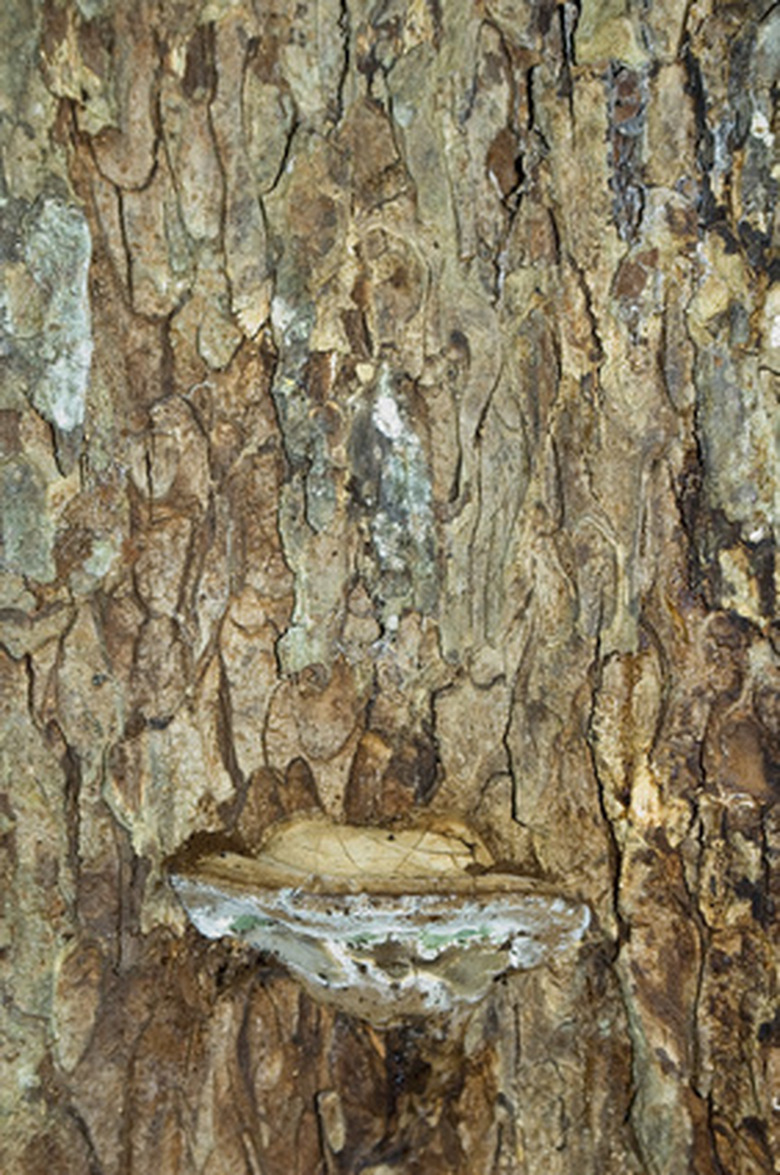How To Treat Fungus On A Tree
Things Needed
- Gloves
- Pruning shears
- Garbage bag
- Fungicide
Fungus spreads through spores often carried by wind, water, insects or exposure to infected pruning equipment. There are many types of fungi that affect the health and appearance of a tree. The spread of fungus to other parts of the same tree, or to a different tree altogether, can be controlled. Chemical treatments for most types of fungi are available, but there are some fungi that cannot be stopped, and the only solution is to cut the tree down. Treating a tree fungus requires fungicide application, sterilized pruning tools and a proper maintenance regimen.
Step 1
Inspect the tree, wearing gloves, to determine the type of fungus.
Step 2
Prune affected parts of the tree, if the fungus is limited to a particular portion and has not spread. Cut infected branches 2 inches below the fungus, using sterilized pruning equipment. Remove the branches in the winter to prevent the fungal spores from penetrating open wounds.
- Fungus spreads through spores often carried by wind, water, insects or exposure to infected pruning equipment.
- The spread of fungus to other parts of the same tree, or to a different tree altogether, can be controlled.
Step 3
Place the pruned clippings in a garbage bag immediately to prevent contact with other pats of the tree. Knot firmly and discard.
Step 4
Apply the appropriate fungicide to the tree. Read label directions for dosage and application details, as many fungicides are applied in proportion to the trunk diameter. Follow the treatment schedule to make sure the tree is fully treated and rid of the fungus.
Step 5
Apply dry, granular borax over exposed surfaces or cuts to seal the wounds and prevent fungal spores from entering.
Step 6
Maintain the tree during the growing season to prevent fungus from appearing again. Water, fertilize and prune as per needs of the tree to strengthen it so that it is not susceptible to disease. Spray a preventive fungicide to the tree, following the label instructions.
- Place the pruned clippings in a garbage bag immediately to prevent contact with other pats of the tree.
- Spray a preventive fungicide to the tree, following the label instructions.
Tip
Shoot-type fungus, which causes leaf spots, is the most common. Vascular fungus prevents essential nutrients from reaching parts of the tree, with symptoms that include leaf wilt and early leaf drop. Cankers appear as swollen or sunken patches on the bark or exposed surfaces of freshly cut parts. Root rot fungus kills roots of a tree, leading to decline and usually death if not treated. Note the symptoms when you inspect the tree to ensure you apply an appropriate fungicide. Some fungicides are watered into the roots of the infected tree, while others are applied to the stems, branches and leaves. In some cases it is too late to control a fungus through chemical means by the time symptoms appear, especially since they go dormant in the winter. Use a preventive fungicide during the growing season to prevent new fungus.
